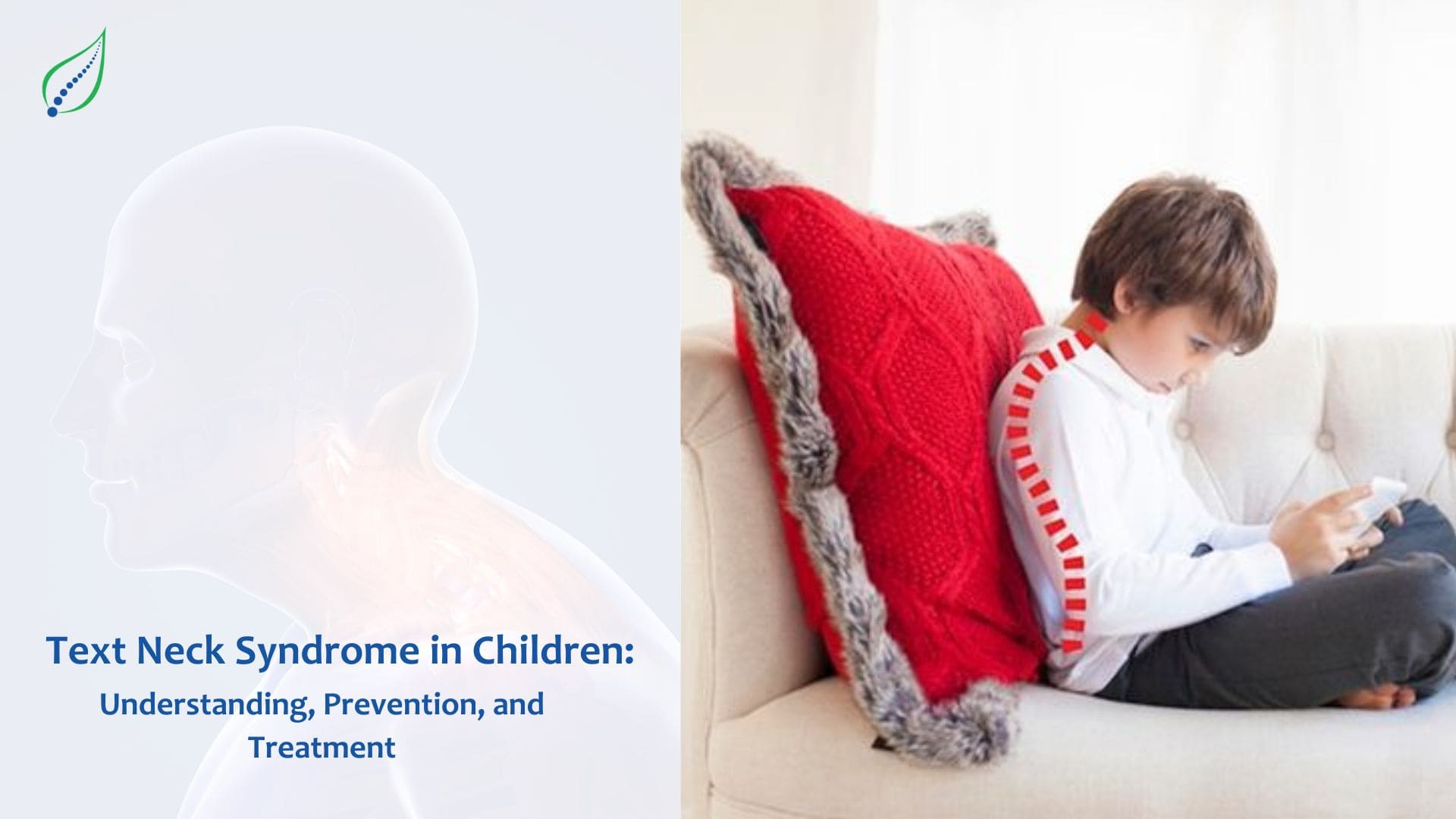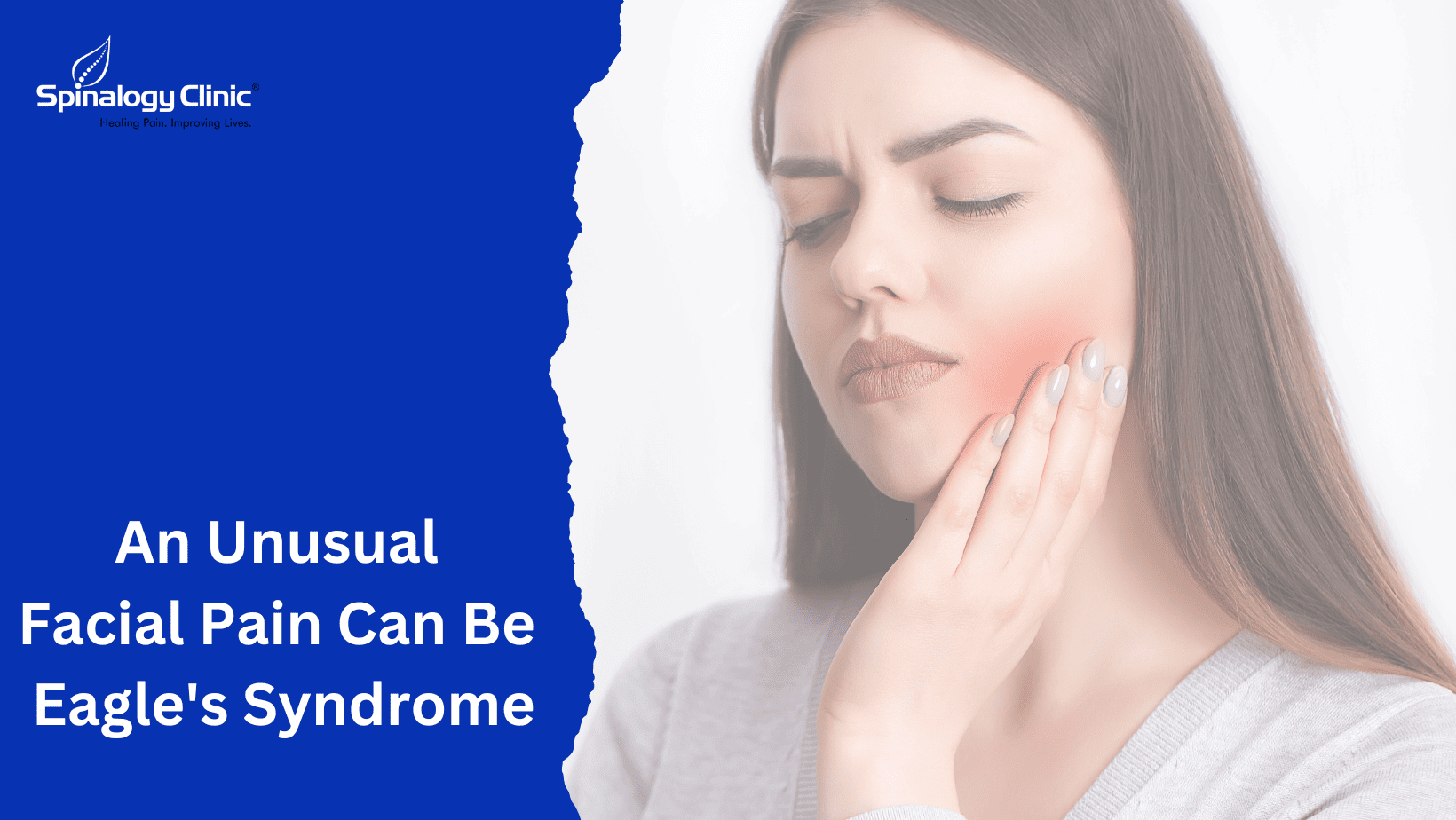Text Neck Syndrome in Children: Understanding, Prevention, and Treatment
What Is Text Neck Syndrome?
Text neck syndrome refers to a group of neck and upper back problems caused by holding the head in a forward position for long periods of time. This commonly happens while using mobile phones, tablets, or other handheld devices. When the head tilts forward, it places extra pressure on the cervical spine, straining the muscles, ligaments, and joints of the neck and shoulders.
Today, this condition is not just linked to texting. Activities like watching videos, attending online classes, scrolling on social media, and especially playing online games on mobile phones all encourage poor posture and long hours of looking down.
How Text Neck Affects Children
Children are particularly vulnerable to text neck syndrome because they are growing up surrounded by digital devices. Screen time increased significantly during the pandemic due to online schooling and virtual interactions. At the same time, mobile gaming has become one of the most common daily activities for kids.
Many children spend long, uninterrupted hours playing online games on their phones, often sitting in slouched positions with the device held below eye level. Because their bones and muscles are still developing, this repeated strain can lead to discomfort and posture problems much earlier than expected.
If left unaddressed, poor posture habits formed during childhood can carry into adulthood and lead to long-term neck and spine issues.
Signs and Symptoms
Text neck syndrome can manifest through various signs and symptoms, including:
-
Sharp or nagging pain in the neck and shoulders
-
Stiffness or tightness in the shoulders and neck, leading to decreased range of motion
-
Intermittent or constant headaches
-
Nerve pain with tingling or numbness in the upper limbs
These symptoms may become more noticeable after long duration on play games online on mobile devices or extended screen time without adequate breaks.
Simple Exercises for Prevention and Relief
Regular movement and simple exercises can help reduce strain on the neck and shoulders.
Chin tuck
Sit upright and gently pull your chin backward, as if creating a small double chin. Hold for five seconds and repeat 20 to 30 times.
Scapular retraction
Sit or stand straight and gently squeeze your shoulder blades together. Hold for five seconds and repeat 20 to 30 times.
Chest stretch
Place one hand on a door frame at shoulder height and slowly lean forward until you feel a stretch in your chest. Hold for 30 seconds and repeat three times on each side.
Foam rolling
Using a foam roller on the upper back can help improve mobility and reduce tightness in the shoulders, especially after long periods of screen use.
These exercises are especially useful for children who spend time playing online games on mobile devices.
Encouraging Better Posture Habits
Good posture habits can make a big difference in preventing text neck syndrome.
-
Encourage children to hold their phone or tablet at eye level, even while gaming
-
Remind them to sit upright with their shoulders relaxed
-
Ask them to take short breaks every 15 to 20 minutes
-
Encourage changing positions often instead of sitting still for long periods
-
Suggest placing the device on a table or stand rather than holding it low
Limiting continuous mobile gaming time and promoting movement can help protect a child’s neck and spine.
When Physical Therapy Is Needed
If neck pain or stiffness continues despite posture changes and exercises, physical therapy may be helpful. A physical therapist can assess posture, muscle balance, and movement patterns.
Treatment may include hands-on techniques, stretching, and strengthening exercises tailored to the child’s needs. Early intervention often leads to faster recovery and prevents the condition from becoming chronic.
The Role of Parents
Parents play a key role in preventing and managing text neck syndrome. Setting limits on screen time, encouraging outdoor play, and modeling good posture can have a strong influence on children’s habits.
Paying attention to posture during activities like mobile gaming and responding early to signs of discomfort can help avoid long-term problems.
Conclusion
Text neck syndrome is becoming increasingly common among children due to prolonged use of mobile devices. Online learning, social media use, and the growing popularity of playing online games on mobile phones have all contributed to longer screen time and poor posture.
By understanding the causes and early signs of text neck syndrome, parents can take simple but effective steps to protect their children. Encouraging healthy posture, regular movement, simple exercises, and seeking professional care when needed can help children grow up with stronger, healthier necks and spines.

_1746449195_1751827240.png)


